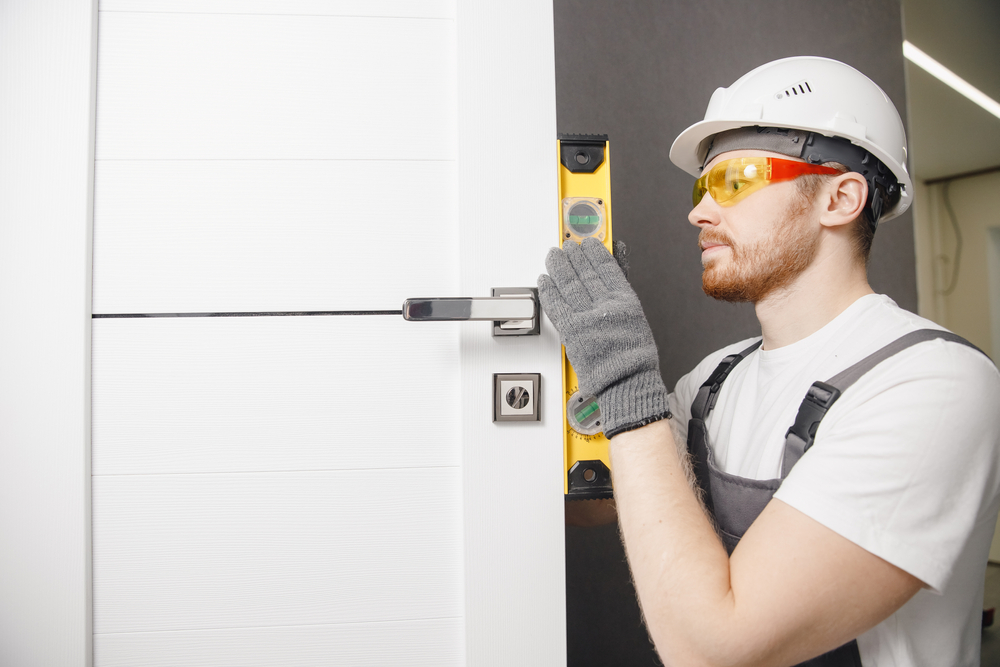Door Installation Checklist
Doors are one of the essential components in every household hence door installation is a critical home improvement process that involves fastening a door into a frame to slow it adequately both for security purposes and to enable it to work and look as it is supposed to. When it comes to the installation of exterior or interior doors, it is important to ensure that installation is done with a lot of care to ensure the door operates as expected and lasts long. That is why a door installation checklist can come in handy when it comes to making the process of installation less cumbersome. This list generally comprises fundamental activities like door and frame dimension, confirmation of the positions, and selection of the right tools and materials. To make sure one does not overlook any details when setting up a door security it works as a guide to make sure one sets up a good door security system.

Types of Doors:
- Framed: A door with a wooden frame to give it support and strength for the whole facility.
- Battened: Made of vertical wooden planks (battens) because they need to be strong.
- Ledged: Vertical board is installed through horizontal ledges that hold them for stability.
- Braced: They have been reinforced with other braces for additional support.
- Railed: Horizontal rails are incorporated to increase stiffness.
- Panelled: Comprises panels which can be of wood to enhance its look and as an insulator.
- Glazed: Windows or breakaway doors where the door and adjacent walls are of a glass finish.
- Louvred: They include the doors with the proper set of holes to ensure that the room receives air circulation.
- Flushed: It has a plain, level-like no panels or feature, outlook on its exterior surface.
- Sliding: Doors that open from side to side on tracks for stacking.
- Steel (collapsible): Some apartment types are fitted with a foldable security steel door.
- Rolling: Vaned or shuttered doors which are usually observed in garages.
- Swing: This type is opened on hinges and can either be opened inwards, or outwards.
- Sheet: It is designed to be formed in a single piece using any material such as plywood.
- Metal: Made of a metallic construction for better strength and protection from theft.
- Glass: It is mainly formed by glass, and it can be used mainly for decoration.
- Wooden: Made of wooden material providing natural elegance and sustainability.
- Pocket: It kind of glides into a wall cavity to occupy less space.
Before You Install Remember:
- Make sure you have all the working materials and tools with you.
- Make sure the door is of the right size and also the right type.
- This is a scrutiny of the door to check for stuff like cracks or damage.
- If necessary check the fire rating of the drywall to ensure you are getting the appropriate safety standard.
- Make sure that all the available hardware properly matches the installation
- Double-check the measurements of the door frame to fit well.
- The door swing plane should be in the right direction depending on how you arrange your space.
- Where the flooring meets the frame, assess the level and positioning of the floor and the frame.
- There should be ample room around the door to allow free movement of its components.
- Make sure that the weatherproofing is added if necessary.
- Carefully read any other instructions that have been provided for installation by the manufacturer.
Upon Installation:
- Vacuum the furniture and floor as well as use soap and water to wipe any surface in the room.
- Whilst commanding how to handle a door, ensure not to slam it.
- Check all the safety features were correctly installed.
- Oil hinges or rollers for easy turn to and fro movement.
- Open the door several times to confirm how it functions as expected.
- Tighten bolts and hinges well so that there will not be frequent problems in the future.
- For difficult installations, it may be wise to consult the professional to conduct the task.
- Align the doors properly and if they are not properly aligned, then adjust them.
- Make sure the doors jam closely to eliminate the chances of drafts.
- Check the finish for any mark that needs to be touched up or any place that requires repair.
After Installing:
- Check to make sure the door is plumb.
- See that the door rolls up and down without a jerk.
- Make sure the door closes tightly with little or no spaces remaining.
- Check for any sound it makes if only it is swinging or it has some sort of squeaking noise.
- If required protection should be provided on hinges or panels so that they may not be destroyed.
- Check on any bolts or screws that may have become loose for better contact and fixing.
- It is advisable to schedule the just about future maintenance check to extend the life.
- Check whether the rubber seal in the door is properly fitted and if not then adjust it properly.
- The locking mechanism should also be tested for correct operation.
- Wash and wax the door so that it can keep on looking as it does now.
Capital Cities
- Doors Installation Services in Melbourne
- Doors Installation Services in Brisbane
- Doors Installation Services in Sydney
- Doors Installation Services in Adelaide
- Doors Installation Services in Perth
- Doors Installation Services in Canberra
- Doors Installation Services in Hobart
- Doors Installation Services in Darwin





